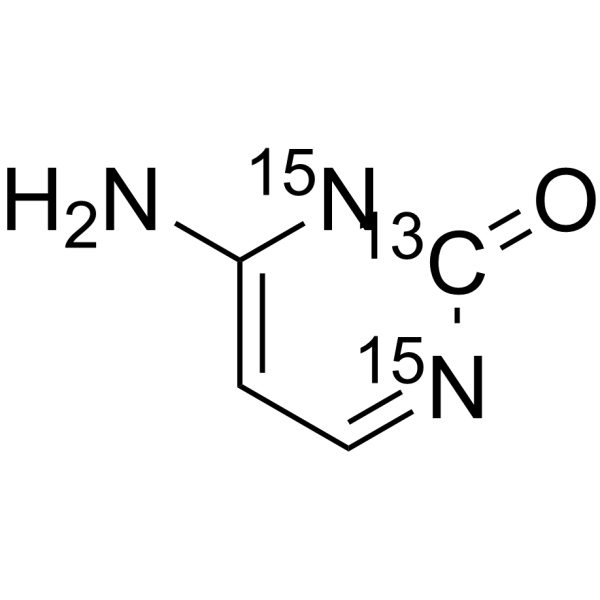Cytosine-13C,15N2
Modify Date: 2024-01-14 16:50:26

Cytosine-13C,15N2 structure
|
Common Name | Cytosine-13C,15N2 | ||
|---|---|---|---|---|
| CAS Number | 181517-10-2 | Molecular Weight | 113.07 | |
| Density | N/A | Boiling Point | N/A | |
| Molecular Formula | C313CH4N15N2O | Melting Point | N/A | |
| MSDS | N/A | Flash Point | N/A | |
Use of Cytosine-13C,15N2Cytosine-13C,15N2 is the 13C and 15N labeled Cytosine[1]. Cytosine is one of the four main bases found in DNA and RNA. Cytosine modifications exhibit circadian oscillations that are involved in epigenetic diversity and aging[2][3]. |
| Name | Cytosine-13C,15N2 |
|---|
| Description | Cytosine-13C,15N2 is the 13C and 15N labeled Cytosine[1]. Cytosine is one of the four main bases found in DNA and RNA. Cytosine modifications exhibit circadian oscillations that are involved in epigenetic diversity and aging[2][3]. |
|---|---|
| Related Catalog | |
| In Vitro | Stable heavy isotopes of hydrogen, carbon, and other elements have been incorporated into drug molecules, largely as tracers for quantitation during the drug development process. Deuteration has gained attention because of its potential to affect the pharmacokinetic and metabolic profiles of drugs[1]. |
| References |
[2]. Maxam AM, et, al. A new method for sequencing DNA. Proc Natl Acad Sci U S A. 1977 Feb;74(2):560-4. |
| Molecular Formula | C313CH4N15N2O |
|---|---|
| Molecular Weight | 113.07 |